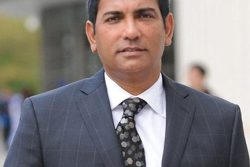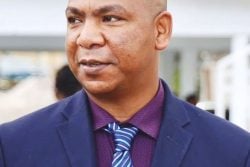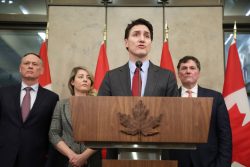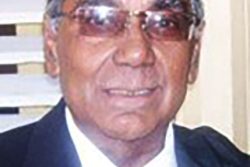In this week’s edition of In Search of West Indies Cricket, Roger Seymour fuses fact with fiction to compose a diary of wicketkeeper Cyril Christiani’s participation in the 1935 Series against England.
Introduction (no date) – I have decided to write a journal of this series against the MCC- Marylebone Cricket Club/England. It’s still befuddling that they play Test matches as England and the colonies as the MCC. The 1933 Tour of England has really consolidated my interest in the game. As the youngest member of the side and the only representative from British Guiana, I did not know what to expect. Apart from the long ocean voyages to and from England, it was the trip of a lifetime. In a hot and sunny summer we travelled all over England and played 44 matches, including 3 Tests. We lost the Three Test Match Series, 2-0, with the Jamaican, Ivan Barrow doing the honours behind the stumps in the Tests. The game is more competitive at Test Level, and I learnt a great deal just sitting on the balconies of Lord’s, Old Trafford and the Oval and intensely watching the shifts in the game. I played in 13 first-class games and only managed 179 runs, and had the honour of playing at Oxford, Cambridge, Lord’s and Trent Bridge. I also kept wicket in 10 non first class games. I have spent hundreds of hours in the nets working on my batting since my return to BG.
The tour has been a source of great inspiration for my younger brothers who have all declared their intention to represent the West Indies and they spend countless hours in front of the mirror posing in my West Indies cap and blazer. Robert’s favourite line is, “Christiani brothers save West Indies again, reads the Daily Argosy headlines.”
I was elated when the team was announced for the First Test in Barbados, as I am the only wicketkeeper selected and will be making my Test debut.
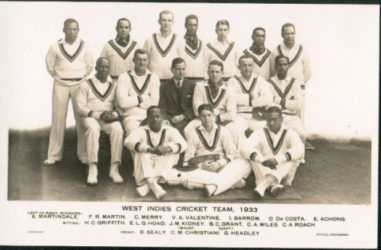
January 1, 1935 – Happy New Year BG!!!!! – Mr A C O’Dowd, West Indies Cricket Board Member and Test Selector, Charlie Jones, the Malteenoes batsman and I, boarded the CNS Lady Hawkins this morning, bound for Bridgetown, Barbados where the First Test will begin on Monday, January 7. Mr O’Dowd chatted with us on a very windy deck about the impending clash with the Olde Country. “The MCC arrived in Barbados four days ago following 12 days of rough Atlantic seas according to reports,” Mr O’Dowd began. “Only five players in the 14-strong touring party can be considered England regulars: Bob Wyatt, Captain, Leslie Ames, wicketkeeper, Patsy Hendren, Wally Hammond and Maurice Leyland, and only the first three were here in 1930. Among the players missing from the 1933 Series are Herb Sutcliffe, Cyril Walters, Gubby Allen, Hedley Verity and former Captain Douglas Jardine. I think they are taking us lightly whilst the whispers in England are that the MCC is saving them for this summer’s series against the South Africans. They have two games against Barbados before the First Test match. The tour itinerary is the same as in 1930, commencing in Barbados, thence on to Trinidad, BG and Jamaica. In 1930, due to financial reasons we had a corps of five players and each host colony supplying the rest of the team, this time we hope to have a nucleus of seven or eight players. Of course, your place in the side is dictated by your performance.” Reassuring words, I have to make runs!!
January 4, 1935 – The team gathered at Kensington Oval today to watch the second day of the second match between the MCC and Barbados. The Trinidadians and the Jamaicans arrived yesterday. The colony side had the upper hand in the first game, but this encounter is really about Wally Hammond. 158 not out overnight, he plundered his way to 281 not out, as the MCC accumulated 601. Jim Smith, the Middlesex fast bowler, hit 83 out of 122 for the tenth wicket partnership, as no bowler escaped the onslaught. The team left at 3 pm for a net session at the Wanderers Cricket Club in Bay Land.
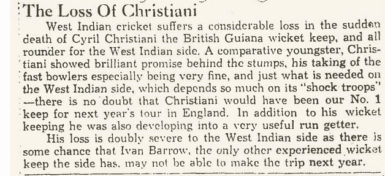 January 8, 1935 – First Day of the First Test Match: My roommate Charlie Jones and I were awakened around six o’clock, this morning, by the sound of heavy rainfall. The rain has been falling heavily for the past three days and the start of the Test was rescheduled by a day by the WICBC. We were both sceptical of whether there would be any play today, a view repeated in today’s edition of the Barbados Advocate newspaper. The team gathered in the dining-room for breakfast at 7.30. We are staying at the Bougainvillea, on the South Coast. I’m a little nervous and didn’t have much of an appetite. Mr Jackie Grant, our Captain, chaired the proceedings. First, he led us in prayers and then thanked us for representing the West Indies. He encouraged us to give our best and reminded us that our supporters throughout the Caribbean are hoping we can win a Test Series, for the first time. His speech was warmly received. ‘Mas’ George Headley came over to our table and greeted me with his usual enthusiasm, “Young Chris (that’s the way he referred to me in England) you gon have to be at your best today, Hylton and Manny will do wonders in these conditions. We better win that toss.”
January 8, 1935 – First Day of the First Test Match: My roommate Charlie Jones and I were awakened around six o’clock, this morning, by the sound of heavy rainfall. The rain has been falling heavily for the past three days and the start of the Test was rescheduled by a day by the WICBC. We were both sceptical of whether there would be any play today, a view repeated in today’s edition of the Barbados Advocate newspaper. The team gathered in the dining-room for breakfast at 7.30. We are staying at the Bougainvillea, on the South Coast. I’m a little nervous and didn’t have much of an appetite. Mr Jackie Grant, our Captain, chaired the proceedings. First, he led us in prayers and then thanked us for representing the West Indies. He encouraged us to give our best and reminded us that our supporters throughout the Caribbean are hoping we can win a Test Series, for the first time. His speech was warmly received. ‘Mas’ George Headley came over to our table and greeted me with his usual enthusiasm, “Young Chris (that’s the way he referred to me in England) you gon have to be at your best today, Hylton and Manny will do wonders in these conditions. We better win that toss.”
In damp, overcast conditions Wyatt won the coin toss and invited us “to have the first knock” on a treacherous wicket. Of course it started to rain almost immediately, and this affected the wicket which had been covered overnight. Farnes quickly had us reeling at 31 for 5. The ball jumped off the wicket at varying heights and speed, and I took note of Ames’ decision to take a couple of steps further back. ‘Mas’ George batted brilliantly, playing each ball on its merit. We were 81 for 7, when I joined him at the wicket, following Ames’ amazing stumping of Hylton. Ten minutes later, I committed an error of dire consequences. Headley flicked Eric Hollies behind square, called and started to run. I screamed no as Errol Holmes swooned on the ball. ‘Mas’ George scrambling back, was run out by two yards. I should have run and given him the safe end. I was still thinking of the chance I had given to Smith at point a few minutes before. The score was 86 and he had sculpted 44 runs on “a wicket not even suitable for beach cricket” according to Derek Sealy. I was 9 not out at the end of the innings. It was only 3.10 pm. Grant and Headley immediately took me aside upon my return to the dressing room. “Focus on the task at hand young Chris. We need you to stand up to the wicket as usual, Jones will back you up. George will get them in the second innings,” Captain Grant said.
Martindale and Hylton bowled with tremendous pace and England were soon struggling at 54 for 5, with only Hammond of the recognised batsmen left to do battle. I don’t think I have kept wicket to anyone as fast as Manny this afternoon. He could have probably bowled out England by himself. Rolf took two excellent catches at fine leg and trapped Ames lbw. Hammond and Jack Iddon held on until the close of play, with England 81 for 5. Hammond is well built but moves very gracefully. He showed remarkable poise and restraint, whilst playing as late as possible. Wally and ‘Mas’ George have shown today why they are among the best in the world. On the worse wicket I have ever seen, they are scoring runs. Ma Christiani is probably furious with me for ‘Mas’ George’s dismissal! What a start to Test Cricket!!!!
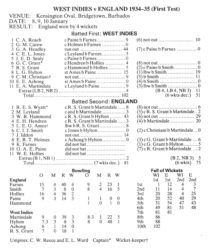 January 9, 1935 – Second Day of the First Test Match: Overnight rain has left puddles of water on the wicket and the field, delaying the start of play. It is now lunch time and I have just heard that Bertie (my brother Ernest) has been selected for the BG Trial matches for the MCC’s visit in February. I can only imagine the celebration at our home in Queenstown and the British Guiana Sports Club on Thomas Road.
January 9, 1935 – Second Day of the First Test Match: Overnight rain has left puddles of water on the wicket and the field, delaying the start of play. It is now lunch time and I have just heard that Bertie (my brother Ernest) has been selected for the BG Trial matches for the MCC’s visit in February. I can only imagine the celebration at our home in Queenstown and the British Guiana Sports Club on Thomas Road.
After hard work by the ground staff, play resumed after tea and Hylton resumed the attack. Hammond popped his second delivery to Rolf at square-leg, and Holmes was dismissed the next ball, giving an easy catch to Puss Achong at mid-on. Wyatt declared immediately, with England 21 runs behind, as he thought it best to let his bowlers take advantage of the wicket in its worst possible state. How are we going to survive on this soft sticky wicket? I wondered. Captain Grant announced a revised batting order upon our return to the dressing room. The lower order would bat first with the specific instructions to occupy the crease as long as possible, in the hope that the wicket can dry out a bit.
Hylton and Rolf opened the innings. With the score on 4, Smith dismissed Rolf, Manny and Puss. I was up next and I approached the wicket with a singular purpose to stay as long as possible. I played cautiously for half an hour as we reached 33 for 3 at stumps, 54 ahead with Hylton on 17 and yours truly on 6.
January 10, 1935 – Third Day of the First Test Match: We arrived twenty minutes ago to find the pitch submerged, I doubt whether we will play today.
Well what do I know? The sun came out around 11 am and some strong breeze followed. Miraculously, play will resume at 3.30 pm. Have to put on my pads.
Big Jim (Smith), as his team mates refer to him, bowled me with a shooter and trapped Hylton lbw. Headley followed without scoring, and at tea we were 51 for 6. Smith has taken 5 for 16.
Grant summoned an emergency team meeting and proposed we declare, leaving England to chase 73 for victory.
“If we can get Wally before he settles, it is possible,” ‘Mas’ George opined. “Let me have them,” boomed Manny.
The weather had turned the game into a battle of minds and Wyatt followed suit and revised his batting order too. Farnes and Smith opened the innings with instructions to ‘go for it’. Manny was even faster than the first innings, and in the first half hour I thought we were going to steal an improbable victory, as the ball leapt off the wicket at incredible speed and on a perfect line. Smith was beaten for pace by Manny and the ball took an outer edge for my first test catch. Captain Grant held two difficult chances at first slip off of Farnes and Holmes but not before the latter had hit Hylton for a massive six. Rolf snared Leyland off Manny, as England reached 29 for 4. Hendren and Hammond at the wicket. The crowd which had kept growing all afternoon was now cheering every run and every dismissal. Hendren had appeared at his usual number four spot and had mixed aggression with stoic defence. Manny then shattered his stumps to reduce England to 43 for 5. Captain Grant never lost his composure at any time and kept in constant discussion with ‘Mas’ George.
Manny’s fifth wicket was from a mis-hit by Paine to Rolf for his fifth catch, as England were reduced to 48 for 6. Opening bat Wyatt now appeared at eighth, only Ames, Iddon and Hollies left. We quickly gathered for a brief word from the Skipper who simply asked us to concentrate on our fielding.
Wyatt defended stubbornly and Wally displayed excellent technique as he looked for quick runs. Hylton, in his Test debut, couldn’t maintain a steady line and Hammond made no mistakes with wayward deliveries. Hammond struck the third ball of Manny’s ninth consecutive over for six over mid-off as England passed the target. The crowd charged on to the ground and lifted Wyatt, shoulder high, to the pavilion. Manny had bowled his heart out, taking 5 for 22. Wally was 29 not out.
It’s now 9.45 pm, and I’ve had some time to reflect on the declaration. It had worked in Sydney, Australia in the Fifth Test in 1931 when the West Indies won by 30 runs and I am sure we would have won today if Learie had been here. I didn’t drop any catches and only conceded 3 byes. The Skipper was gracious in defeat and thanked us for our efforts.
January 23, 1935 – The Second Test begins tomorrow at the Queen’s Park Oval. There are two changes to our team. Clifford Roach asked to be excused for the Trinidad leg to attend to personal matters and George Carew, his opening partner in Barbados has been dropped. Their places have been taken by Learie Constantine and Oscar Da Costa. Learie arrived from India on January 11, where he had been playing cricket, a guest of the sporting Indian Prince Maharaja Kumar of Viziaugram.
The MCC’s two matches against Trinidad at the Oval were both drawn. In the first, Hammond got another century and Maynard, the local debutant scored 200 not out. Set 178 in eighty minutes, the home side delighted the crowd with enormous hitting, reaching 159 for 8. The other game was a low scoring affair with Trinidad again, just short of time to secure the victory.
This morning we had an easy net session at the Queen’s Royal College, the Grants and Achongs’ alma mater not far from the Queen’s Park Hotel on the Savannah.
Memories of the pitch on the small square at Saint Stanislaus College, my alma mater, on Brickdam, came flooding back. It was there that I started standing up at the wicket to the faster bowlers, much to the concern of the Jesuit games-master. Learie has put on some weight and seems to be faster than the last time I faced him.
January 24, 1935 – First day of the Second Test Match: Radio Station VP4Y6 will broadcast Test Cricket for the first time ever in the West Indies. There will be reports at the lunch and tea intervals, and the last hour of play will be carried as live ball-by-ball commentary, followed by a summary of the day’s play. Listeners as far as St Kitts, St Vincent and parts of BG are expected to receive the broadcast.
Wyatt won the toss for the sixth consecutive time on the tour and surprisingly invited us to bat first, on the new jute matting wicket. The West Indian innings was opened by a BG pair for the first time ever, Charlie and yours truly. We batted without much trouble on the matting for about forty minutes before Jones played too early to a delivery from George Paine and offered a simple catch. We had put on 32. I followed shortly afterwards for 11, top edging Smith to backward square. I was playing well and just got too adventurous. This is Test Cricket, not Saturday afternoon club cricket, I can’t afford to lose my concentration!
The first half of the innings was the Derek Sealy show as he scored runs all around the wicket. At 174 for 5, he was joined by Learie, who then sent the record 11,000 spectators into a frenzy. When Wyatt deceived Derek with a quicker ball, bowling him for 92, it was his first mistake in nearly three hours. Charlie and I sat on the balcony and watched this innings of pure grace. It was worthy of a century.
Learie is one of those rare cricketers who can change the course of a match in an over or two, with the ball or the bat or his fielding. He will take chances with his pulls, drives and sweeps, but the scoreboard keeps ticking. At the close, we were 284 for 9, with Learie on 72 and Manny yet to score.
January 28, 1935 – Fourth day of the Second Test Match: I woke up at 5.45 am, and have decided to write a few lines. How did we let this match slip out of our grasp? Rolf’s three marvellous close catches on the leg side of Wyatt, Hammond and Ames, 23 for 5; Hendren 41 c Jackie b Rolf, 95 for 6; 178 for 8; Iddon 73, Holmes 85 not out – our first innings lead is only 44, should have been 160? 170? Play will resume with us on 150 for 3. ‘Mas’ George, not at his best, but still there on 50 and the Skipper on 21.
The Grants invited the team to lunch yesterday, Sunday, the rest day, and the mood was upbeat. Constantine thinks we can bowl them out in two sessions, he has obviously forgotten that Manny broke a finger on his right hand whilst fielding on Friday (second day), and hasn’t played since, Learie’s brother, Elias, the reserve has taken his place. What is the Skipper planning?
Well, well, what do I know of Test Cricket? Grant declared at lunch today, with the score at 280 for 6. Headley’s 93 was our third 90 of the match. Constantine, Da Costa and Rolf contributed quick runs to put the match beyond England’s reach. 325 required in two sessions. A tame draw was in the making until Wyatt decided to revise his batting order. What was he thinking? I made a copy for this log. The numbers reflect the order they batted in the first innings: Farrimond (10), Townsend (2), Paine (11), Smith (9), Hammond (3), Hendren (6), Wyatt (1), Ames (4), Leyland (5), Iddon (7), Holmes (8).
Manny gallantly opened the bowling with Learie, but could only manage 5 overs, the pain was just too much. England never made an attempt to play their natural game and draw the match. Their innings was soon in disarray at 62 for 4. Learie clean bowled Hammond and got Wyatt to touch an outswinger to Headley at slip. 75 for 6.
The packed crowd grew louder and louder. Hendren was run out going for a run that was never on, 79 for 7. Ames and Leyland at the wicket, our first innings tormentors Iddon and Holmes padded up.
Grant kept switching the bowlers around to unsettle the batsmen. Da Costa, Sealy, Jones and his left arm spin, Rolf and Achong all bowled. The overs went quickly and we scurried to change around after every over. Hylton bowled a perfect line all afternoon and in his second spell, delivered a superb lifter that Ames fended off to Achong at mid-off. The next delivery, a slower ball, Iddon edged for an easy catch down the legside to yours truly. 103 for 9. Last pair, Leyland and Holmes.
Last over of the match. Constantine to Leyland. Learie thundered in. The first three balls struck the pads, the entire ground was appealing. Fourth ball, he got a knick and I took it cleanly over the stumps. Learie and I screamed in unison, only for umpire Guillen to turn us down. The skipper walked over to Learie and spoke calmly to him.
Learie charged in, slower ball, Leyland completely deceived, is struck plumb in front, lbw, one ball left, we won by 217 runs.
February 13, 1935 – It’s 9 pm. The Third Test Match starts tomorrow at Bourda. My first Test Match at home and the entire family is coming. My batting in the colony matches against the MCC was unspectacular. I had scores of 10, 9, and 0. The first match was drawn, with Hendren making 148, whilst Charlie 72 not out and Frank de Caires 80 not out enjoyed an unbroken third wicket partnership of 153. In the second game we collapsed in the second innings for 57, as Paine and Wyatt took 4 wickets each. Hammond 106 and Townsend 93, added 204 for the second wicket as the MCC won by 9 wickets.
Kenny Wishart and Jim Neblett, both from the GCC join the team in place of Da Costa and Achong. ‘Mas’ George is looking forward to batting on the Bourda pitch where he had a century in each innings in the 1930 Test Match.
February 18, 1935 – Fourth Day of Third Test Match: The Test finished in a tame draw this afternoon, with yours truly 32 not out, after I opened with Wishart in place of Charlie. Wyatt won the toss again and England batted very slowly after a rain-delayed start. In a forgettable match, Hollies 7 for 50 in the first innings, and ‘Mas’ George’s fifty were the highlights. The dull cricket was huge disappointment to the large crowds.
March 15, 1935 – Second Day of Fourth Test Match – Players’ balcony, Sabina Park, Jamaica: ‘Mas’ George Headley is on the go.
“Write this young Chris,” Sealy prompts me to make an entry in my log book.
“I saw his 176 on debut at Kensington in ‘30, his two hundreds at Georgetown, his unbeaten 102 out of 193 at Brisbane and the 105 at Sydney (1930/31 Australian Tour) he has never been better. Yesterday I saw him hit a cover drive off of a perfect delivery from Farnes. Farnes turned and asked me, ‘how do you bowl to this chap?’ (Sealy, 91, added 202 for the third wicket with ‘Mas’ George). We can tell our grandchildren we played on the same team with Headley.”
I am trying to write and look at the same time. Four more!! The crowd is on its feet, the slow hand clap has begun, ‘Mas’ George is on 249. There it is, 250.
The noise is deafening, the England players are congratulating him; everyone is standing.
I feel a light tap on my shoulder, it’s the Skipper, “If I don’t declare, he will bat forever.”
Footnotes: West Indies won the Fourth Test by an innings and 161 runs for their first series win.
Scores: WI 535 for 7 Declared, Headley 270 not out, England 271 & 103
Robert Christiani represented the West Indies in 22 Test Matches.
Cyril Marcel Christiani is thought to be amongst the best, if not the best, to ever don the gloves for the West Indies.
Trivia question: How many Christiani brothers played for British Guiana?


